I'm not deluded. I know they don't belong here. I know they're not good for much of anything.
Unless the thrill that comes with the scream of the reel and sight of my backing escaping through the tip-top of my favorite 7-weight counts as "good." But if that's the case, I'm pretty damn selfish.
Carp are marvelous, adaptable creatures, with a survival instinct that might not be rivaled. But their mere presence is a detriment to the way things ought to be. The fact that they're here, swimming in this river, at this time, is but one sign of the natural apocalypse. But I can't help but be mightily impressed.
Very soon — just a few short weeks from now — a remote freshwater flat in southern Idaho will come alive with massive carp as they prepare for a freshwater fish orgy unlike any other. And, if Mother Nature can hold the wind at bay one glorious evening, granting those of us who show up to witness the debauchery, we’ll do our best to knock a few invaders on the head. The sight of a tailing denizen that, while it doesn't belong here, is one of those moments that steal breath from fly fishers. The eat can be subtle or violent. The battle is salty, even 800 miles from the nearest ocean.
Its native range is half a world away in southern Asia, but it’s been propagated on every continent save Antarctica, largely for food and perhaps subtly for sport. In Europe, the carp is the gamest of fish, for it swims virtually anywhere there’s water and enough food to sustain it. The average angler may not be able to get a beat on the Test on short notice, but elbow room on the Thames? No problem.
Here in the U.S., the common carp has been an angling staple since 1831 when it was intentionally introduced and helped fuel the Industrial Revolution. Plentiful, big and adaptable, carp helped feed a burgeoning nation. Today, many do, indeed, consume carp. But many of us who cut our angling teeth on carp can only think of the rancid water we first pulled them from and wonder what those who do eat them are thinking. My first carp came from a city drainage pond in suburban Denver. If my mother knew I swam in that water, she’d be mortified. She’d clutch her pearls and likely pass out if I told her how many times I’d pulled leeches off my shins after a swim.
I have a fly-fishing friend who lives in nearby Pocatello. We share a great little carp flat with a handful of other anglers — it’s kind of a gritty, southern Idaho subculture of dirtbag fly fishers who, on any given day between mid-April and mid-June, might be found in knee-deep water casting to cruisers or tailers in a remote stretch of the Snake. One year, my buddy kept a few carp and cleaned them riverside. After getting past all the bones and the blood, he was left with several significant filets.
“I’m going to smoke them and take them to work, just to see if people will eat them,” he told me. And I’ll be damned if he didn’t. The next week, on a chance meeting on the river, he noted that everybody loved the fish until he told them what it was that passed their lips. Predictable, right?
Of course, the carp’s hardy nature puts it at home in just about every environment, tortuous or otherwise. But the Snake as it flows between basalt bluffs on the unforgiving high desert, which can be so barren, so cold, so ... desolate, yet so wonderfully beautiful, doesn't deserve to be trashed by some Asian cyprinid that can't swim a dozen feet without stirring up the bottom and wreaking havoc on the way things ought to be.
But things aren't perfect. No longer is this a froggy little backwater where native Yellowstone cutthroat trout congregate to spawn on black, volcanic gravel. It's a place where massive carp pair up and enjoy soupy sex in water that was once just right and is now just right enough. It's where non-native smallmouth bass meander among the rocks and the occasional monster rainbow or brown trout might interlope into what has become a perfectly functional warm-water fishery in coldwater fishery country.
Soon, when winter starts to fade and the sun over the sagebrush sea starts to warm the water — and when the gang arrives to chase these massive, piscine children of a far-away land — I can show my respect, but I don't have to show my sympathy. If a few are tossed on the bank for the coyotes and the racoons, so be it. They don't belong here. They don't belong anywhere on our shores.
But that doesn't make them less incredible, and I'm no less impressed.
Here's to the rangy carp. May it die with honor.





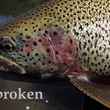




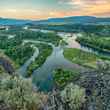
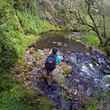


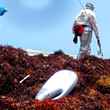




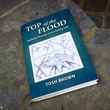
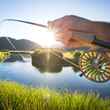









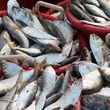
Comments
Dennis Bailey replied on Permalink
I loved your story Chris, as a kid I grew up in East Texas fishing for carp , alligator gar, catfish, or anything I can chat. Ace make my own dough bait oatmeal,cornmeal, instant coffee, cinnamon, a bit of honey and water. I have caught 70 lb carp as a kid would sometime's took up to 45 minutes to reel them in. I'll never forget it the fight incredible. Thank you for your story.
Bill Crumrine replied on Permalink
Carp maybe adaptable, but in my own personal belief, they are the stupidest and ugliest creatures on the face of the earth. Like B.A.S.S. Senior Conservation writer for the BASS Publication, B.A.S.S. Times, he summed up the idea that they silt the water, carp can and do feed on bass eggs and fry, turning the water any murkier would be hard to do.
Rubber Lips replied on Permalink
I find it ironic that a “bass snob” has appeared... there are many who feel about bass the way you feel about carp. I enjoy both species. Carp are a lot of things, but dumb is NOT one of them! Read some fisheries research on the relative intelligence of different fish species. Carp will consistently score near the top.
Anonymous replied on Permalink
Carp get such a bad wrap! They're probably one of if not the most intelligent gamefish there is! People need to educate themselves otherwise they make themselves sound dumb!
Pages